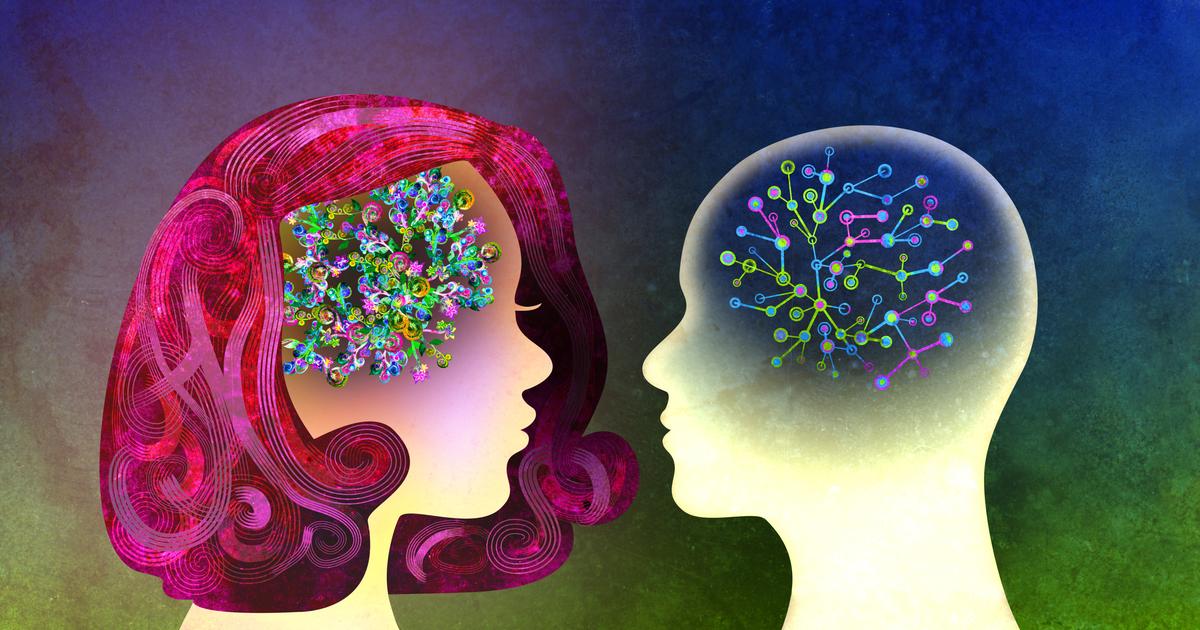Numerous colors on display at a Montana Colors graffiti paint store.
Life is a raffle of light and color, as the song says.
When we open our eyes, a world dyed with infinite colors immediately appears before us.
But they are not a mere decoration of our visual world: they allow us to identify the objects, materials and substances in our environment.
In addition, they facilitate communication with other people.
We can differentiate a ripe banana from another that is still
green
.
Or ask a store for a size forty of the red shoes in the window.
the name of the rose
Although the number of chromatic nuances that we can perceive is enormous, the communicative function of colors promotes the use of only a limited number of words referring to them.
This phenomenon is known as color categorization, that is, the grouping of shades in the same category associated with a word:
green
,
red
,
blue
,
pink
...
It is a sign that the world of colors, like many other aspects of perception, can be affected by cultural influences and our learning experiences.
The snows of the Eskimos
Surely you have read that the Eskimos are capable of discriminating many different types of snow thanks to the fact that they have dozens of terms in their language (Inuit) to refer to that physical state of water.
However, it is a pseudoscientific myth popularized in the first half of the 20th century by the linguist Benjamin Whorf.
Whorf was a strong advocate that the language we learn drastically affects the way we perceive, remember and think about the world, a hypothesis that is called linguistic determinism.
Actually, the Inuit language only has four basic words for snow, from which a few more are derived.
In Spanish, for example, we only have one term for
snow
, but by combining it with other words, it is also possible to discriminate between different states of the same, such as
sleet
,
powder
snow ,
spring
snow or
hard snow
.
In this way, Spanish-speaking skiers do not need to learn the Inuit language to be able to perceive and communicate all these snow gradations.
How we pack the colors
Can we rule out then that our mother tongue influences how we perceive colors?
The way we package them into categories has been a very active testing ground for testing the linguistic determinism hypothesis.
The classic study by the anthropologists Brent Berlin and Paul Kay (1969) was a very important contribution in this field.
These authors investigated the words to denominate colors in a hundred languages from all over the world and observed that the chromatic terms were not distributed arbitrarily between the languages, but following a predictable hierarchy.
If a language only has two color words, then these are black and white.
If you have three, they will be white, black, and red.
With five terms, green and yellow are added to the previous ones.
And so on.
The six basic colors: black, green, red, blue, yellow and white. Lewis Tse (Shutterstock)
In short, contrary to the hypothesis of linguistic relativity, what is found is a universal pattern that revolves around the six basic colors proposed by the theories of color perception: white, black, blue, yellow, green and red. .
How blue is sky blue?
In Spanish, as in English, we only have one basic term to refer to bluish colors.
However, in languages such as Russian, Greek or Turkish they have different words to refer to the light - or light blue - and dark tones.
For example, in Greek, the terms are
ghalazio
(light blue) and
ble
(dark blue).
Several studies have shown that speakers of these languages differentiate between light and dark blues more quickly and reliably.
In addition, they exaggerate the perceptual differences between intermediate hues compared to speakers of English or Spanish, as if they were more
distant
colors for them.
Other similar results with several chromatic categories allow us to conclude that the packaging that each language makes to name the colors influences the way in which they are perceived and remembered by their speakers.
So let's see how we talk?
Recent research shows that there is indeed some impact of the mother tongue on color processing.
However, this relativism is far from the resounding linguistic determinism proposed by Whorf.
In fact, with quick training, anyone can expand their color vocabulary and easily learn to discriminate between different shades of blue or any other color, as several studies have shown.
In the same way, even people who are not familiar with snow subtypes can learn to discriminate and name them, as do Eskimos or skiers.
Interestingly, in a study with Greek speakers who had lived for a long time in the United Kingdom, it was found that they were more likely to resemble
ghalazio
and
ble
due to the influence of the English language, which, as we have seen, groups them into one single linguistic category.
In short, the flexibility of our perceptual system allows us to adjust to the environment in an adaptive way to continue enjoying the raffle of light and color.
Pedro Raúl Montoro Martínez
is Professor of the Department of Basic Psychology of the UNED
This article was originally published on
The Conversation
.
Here you can read
the original
.
You can follow EL PAÍS
Salud y Bienestar
on
,
and
.














